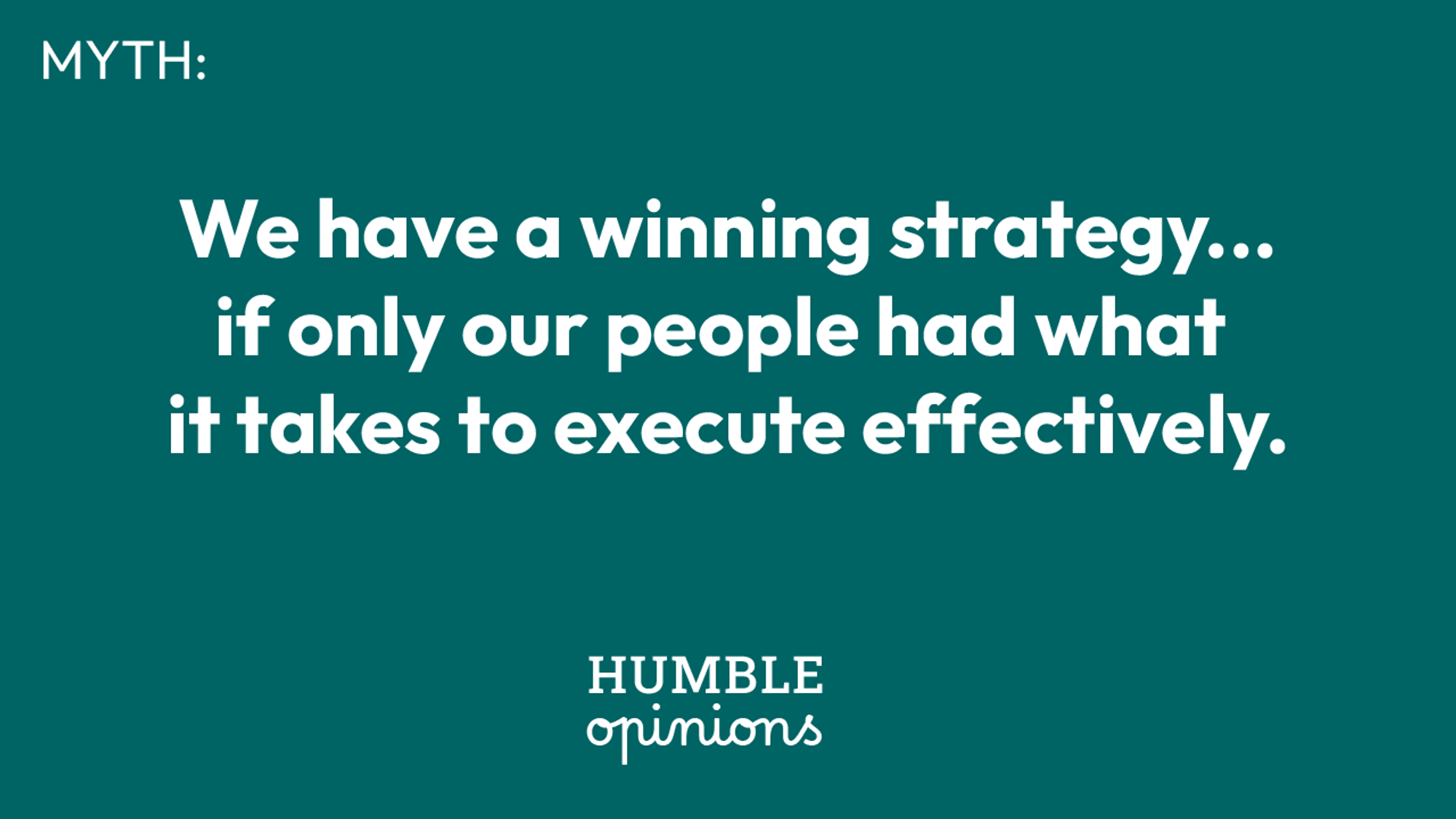5 Jun 2024
Why Teams Work on the Wrong Things


Have you ever felt like your teams are competing against each other or actively working at cross purposes? It’s easy to chalk it up to personality conflicts, departmental silos, or general resistance to your strategic vision. Sure, those are problems, but misalignment is usually about something else.
An unclear or gappy strategy—People can't grok the 'why' and 'how'.
Incoherent execution—The parts alone seem good, but the work doesn’t make sense when seen all together.
Every time I've seen this, there's no malicious intent or incompetence. Actually, most teams and individuals are giving their best to advance toward goals, without realising how it might be negatively impacting other company efforts and objectives. Here's why it happens.
Lack of clear strategy
While executives may believe they have a well-defined strategic roadmap, this is often not clearly translated through the organisation. When there’s even a hint of ambiguity about the company’s goals and priorities, teams insert their own interpretations that favour their pet projects or hobby horse topics. It leads to competing agendas and Shadow Product Work— the unofficial and invisible work, that eats resources and is hard for any leader to corale.
Proliferation of competing metrics
In response, leaders double down on departmental metrics and key performance indicators, hoping that by tracking the right numbers, the work and activity will self-correct. The intent is right, and it might even work in mature organisation where teams know how to organise around company goals, with the right management systems in place to coordinate efforts effectively. More often, over-reliance on metrics exacerbates misalignment, particularly when teams develop tunnel vision for their own goals. This often leads to behaviours that undermine other teams’ effectiveness, or create incoherent action across teams.
Leadership culture clash
It’s oh so fun to eavesdrop at the company lunch. While The Dreamer pontificates on a Think Big vision for the future, The Realist shows a scrunched face and darting eyes that reveal unspoken contempt: ‘Nice idea. Never going to happen’. It's not until at the bar later that evening, surrounded by comrades, that their truth is fully heard. People aren’t carbon copies and I believe our differences are what fuels innovation. So this isn’t a people problem. Culture clash is destructive when a system of work doesn’t fit the people doing the work. In other words, when leaders’ expectations of how work gets done doesn’t match the M.O. of the people doing it.

Each of these issues originate from leadership decisions around strategy formation, planning, and organisational design. But too often, leaders read the symptoms as a people performance issue, “we have the right strategy, if only our people had what it takes to execute effectively”. I die a little bit every time I hear this. Embattled workers are doing their best and giving their all. They’re often hamstrung by conflicting objectives that change too frequently. They’re well aware when things aren’t going well, and already taking it personally, the last thing they need is blame from leaders for poor business performance. It’s usually misguided, and always incredibly uncaring.
Imagine this example
A software firm gets overly enamoured with a new product idea and pushes aggressively to get it to market. Though engineering advises more testing is required, sales and marketing teams get strong-armed into making bold revenue commitments to satisfy investor expectations.
To hit targets, sellers begin to forward-sell, trying to enticing customers with future value that's 12 months away on the roadmap. Marketers are pushed to generate leads and create some hype, despite uncertain delivery timelines. Engineering and Design scramble to bring forward nascent capabilities to deliver on future promises earlier, but only find big assumptions and hidden complexity in the proposed solutions. Meanwhile, the Customer Success team does their best to support inflated expectations of a product that isn’t delivering the promise.
Deadlines slip and targets are missed, and teams are chastised for not operating cohesively towards collective goals. “How did this happen, and how did we get here”, they ask... awaiting someone to own the mistake. Yet the outcome is predestined, with unclear strategy that drives division among teams. Exacerbated by a proliferation of competing KPIs across teams. With a culture that vexes the best efforts of people who are really committed, and working hard to win.
Sound far-fetched? It's a spicy and dramatic take, but I see variations of this playing out in companies of all types and sizes.
A few paths forward
The good news is that doing better doesn’t require a big culture transformation, re-organisation, or new people. Most employees genuinely want to support company performance and they're hungry for the right support. You just need to give it to them!
Clearly articulate strategic priorities at all altitudes
Don't stop at the executive circle. Work through the organisation, up, down, and sideways. If you can’t explain it on one slide or in a 5 minute conversation—it’s probably not clear enough. Teams need to know what matters most, especially when plans shift, and most people probably won't read your big strategy doc (Sorry!).
A great mental model for fast strategic alignment is The Decision Stack by Martin Eriksson. And I'm particularly fond of how Petra Wille uses it. Incredible resources. Use them!
Give permission to miss
Start by defining how collective success across teams stacks up to achieve company objectives. Fine—use OKRs if you must. The best metrics for strategic execution are ones that deliver learning that informs better decisions. That’s how teams find the winning solution, and better business performance is a happy byproduct. The most important thing is making it okay to miss the number. I like Failure cake for this, but the idea is much bigger than a ritual. Pay attention to the narrative that goes with your metrics. What are you achieving my measuring it? Nobody cares about the bottom like like you do. Instead, make metrics be about supporting decisions that are being made.
Empower teams
No! I don’t mean “give directions and get out of the way”. I’m talking about making space for the people you have—to work in ways that enables their best contribution. For some folks, that could be as simple as asking what they think, and listening. Someone else, give them the keys to Cadillac and let them drive around the carpark at midnight—it’ll be fine. What about that brilliant jerk who gets results but is loathed by all? It’s a tough call, but be encouraged to consider what teams might achieve without a thorn in their side.
Closing thoughts
Misalignment and poor strategic performance is often a symptom of problems in strategic planning and communication, and not usually an indicator of team-level dysfunction or problem-individuals. With the right culture, clarity and connected-up metrics (Three C’s, oh dear), most people are willing and able to rally around your vision, and will give their best to execute with skill to deliver the desired outcomes.
You create the right conditions.
Teams play their best game to execute.
Business performance follows.
So don’t be a leader who complains about bad execution. Instead, become one who creates the conditions for success and inspires teams to win. That’s true leadership.